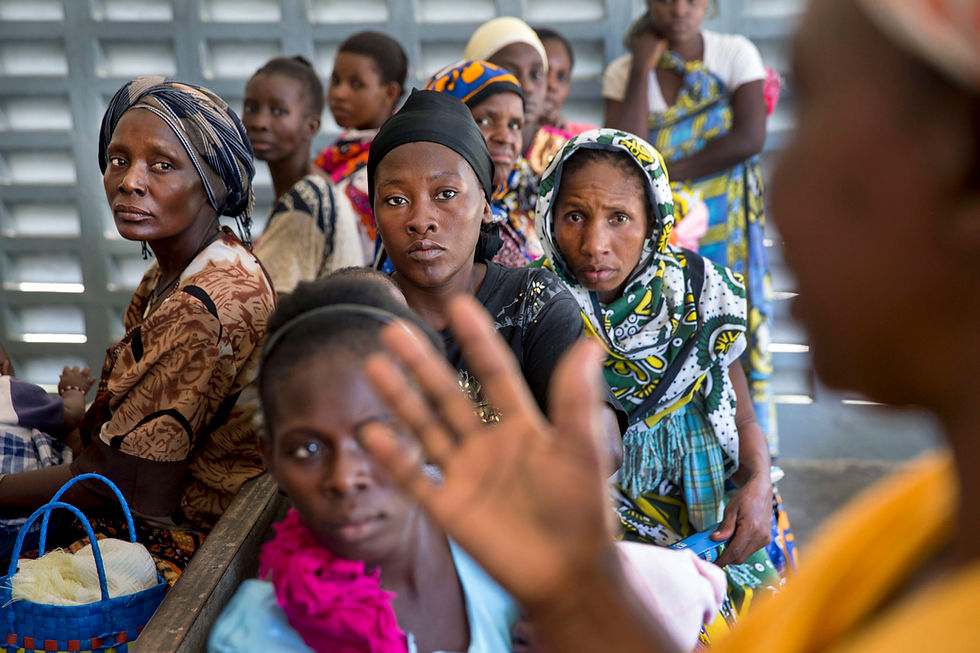How can we encourage successful participation of women and girls in HIV prevention research?
- Laura Lusike

- Oct 11, 2021
- 3 min read
Updated: Nov 30, 2021
For a HIV prevention research study to be carried out successfully to completion, community participation is vital. But what reasons influence why someone may or may not enroll in a study?

Among younger populations in sub-Saharan Africa (SSA), adolescent girls and young women (AGYW) experience the greatest burden of HIV, sexually transmitted infections, and unintended pregnancies. Their participation in sexual and reproductive health studies is paramount as it will help services, policies, and health technologies better meet their sexual and reproductive health needs. An engagement protocol that addresses their needs and concerns is key to securing their participation.
Awareness campaigns about upcoming studies are a key component of this effort and must be done at the community level through different channels, including community leaders, peer leaders, staff and non-staff team members, social media, and print media. Peer leaders play an important role in sensitisation, creating awareness of the study, and participant recruitment. They are regarded as agents of positive change who have often participated in previous studies and are able to influence prospective participants to join research studies.
The research team must also engage in other means of raising awareness and recruitment such as through print media and social media. Younger participants spend considerable time on social media and may appreciate and quickly respond to social media posts promoting research participation.
Altruism also influences participation in research. AGYW may be willing to spare their time to support research in the hope of ending HIV due to the heavy burden it continues to have among their peers. Therefore, it is important to clearly explain how their participation will contribute to HIV prevention efforts. Future social behavioural studies involving AGYW aged 15-19 could thus help further empower the choice and autonomy of this population.
Concerns about safety must be carefully addressed. Clear assurance that the study is safe to be conducted among human subjects can determine whether participants do or do not join a study. Medical examinations carried out during screening and follow-up visits, such as taking blood samples, can also influence participation, with the frequency of visits and procedures and how their medical information will be used being of particular concern. In clinical trials where a study product such as an HIV vaccine candidate is administered, some participants may decline to participate out of fear that the study products may be unsafe or cause side effects, such as on their reproductive system. Conversely, participants may have misconceptions that the study product, such as an HIV vaccine candidate, has already been shown to be effective in providing protection. This misconception may lead to an increase in risk-related behaviours, such as condomless sex. A robust informed consent procedure and continuous education about the safety of the study procedures and products can help alleviate these fears and misconceptions. Furthermore, it is important to clearly explain the purpose of the trial during the intake session and emphasize that the study product is still under investigation and has not yet been shown to be effective.
Parents, spouses, relatives, friends, and colleagues can further influence participation, with distrust in study procedures being a common reason for discouraging participation. This implicates the issue of disclosure. Disclosure of participation may allow participants to receive much needed support from their peers while minimizing misunderstandings. Some participants may not disclose to others their intentions to participate out of fear of negative reactions. It is also not always safe for a participant to disclose this information, such as due to risk of intimate partner violence (IPV). Studies must thus have clear protocols in place on how to address these safety issues, which may include not enrolling individuals at risk of IPV. To encourage the engagement and support from a participant’s partner, studies may consider involving couples and confidants to enhance positive interpersonal support.
In conclusion, many reasons, both positive and negative, influence why someone may or may not participate in a research study. Considering the importance of involving younger populations such as AGYW in research studies, ensuring that all participants clearly understand why they participate in a study is crucial. It is likewise important that researchers understand the varied reasons for participation to guide them in the design, development, and recruitment of future studies in a way that meets the needs of all stakeholders. The bottom line is that researchers must ensure the safety, wellbeing, and active engagement of both prospective and enrolled participants to facilitate a safe and inclusive experience before, during, and after the study.

Comments